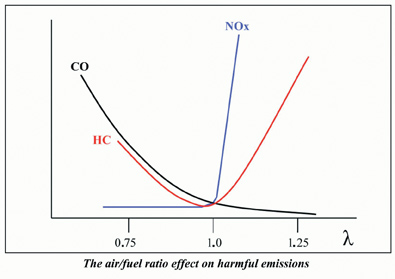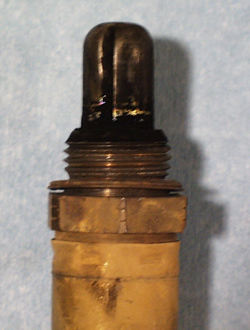If the “check engine” light pops up on a vehicle’s dashboard, most motorists – even the seasoned ones – may ignore it unless there is a significant change in their vehicle’s engine performance.
 But even when it’s not, give it a closer look – if you want your customers to save on costlier repairs down the road, or better still, want them to save on gas mileage before they have to make those costly repairs! That is certainly what will happen if you pull the trouble code and it says the oxygen sensor is faulty.
But even when it’s not, give it a closer look – if you want your customers to save on costlier repairs down the road, or better still, want them to save on gas mileage before they have to make those costly repairs! That is certainly what will happen if you pull the trouble code and it says the oxygen sensor is faulty.
"If so, it’s important to know that oxygen sensors seldom fail outright,” said Warren Suter, director, Engine Management Systems, Bosch Automotive Aftermarket. “Most often, they gradually slow down resulting in increasingly poor engine performance since they can no longer properly assess the air-fuel ratio. Most important, a worn-out oxygen sensor must be replaced or it could potentially lead to the damage of the catalytic converter and other components.”
 Now consider the numbers. The average car drives 12,000 miles per year and gets about 20 miles per gallon of fuel. It therefore uses 600 gallons of gas a year, which at $4.50 per gallon, costs $2,700 per year. If a car is losing 10 percent of its fuel due to a worn-out oxygen sensor and the vehicle owner waits 6 months to get the repair done, then he or she will waste fuel worth $135, which is approximately $22.50 per month. And, if the car in question uses premium grade fuel or is a gas guzzler, the numbers could very easily go well into the $30 range.
Now consider the numbers. The average car drives 12,000 miles per year and gets about 20 miles per gallon of fuel. It therefore uses 600 gallons of gas a year, which at $4.50 per gallon, costs $2,700 per year. If a car is losing 10 percent of its fuel due to a worn-out oxygen sensor and the vehicle owner waits 6 months to get the repair done, then he or she will waste fuel worth $135, which is approximately $22.50 per month. And, if the car in question uses premium grade fuel or is a gas guzzler, the numbers could very easily go well into the $30 range.
Depending on the year, make and model, a vehicle can have as few as one or as many as four oxygen sensors at various locations in the exhaust stream. The oxygen sensor measures the amount of oxygen in the exhaust and signals the engine’s computer to adjust the air/fuel ratio to ensure the gasoline combustion is as complete as possible, thus reducing harmful emissions while improving engine performance and fuel efficiency. If there is a shiny or gummy deposit on the oxygen sensor’s heat shield, it’s time to replace it.
If the oxygen sensor fails to assess the air/fuel ratio accurately, the engine management adjusts to accommodate the variation and, in the process, runs either too lean or too rich. The result? The catalytic converter and other components can be damaged – now you may be talking about $1,000 or more in repair costs!
Compare that to the average cost of replacing a worn-out oxygen sensor, which in some cases may only be as little as $100 or so for diagnosis, parts and labor, depending on the vehicle. More commonly, the bill for these services runs to $200 to $300. Either way, with potential fuel savings of $20+ a month, it won’t take long before this investment pays dividends. Plus, keeps the air cleaner to boot!
 Courtesy of Robert Bosch LLC.
Courtesy of Robert Bosch LLC.
For information on products offered by Bosch, visit www.boschautoparts.com.













